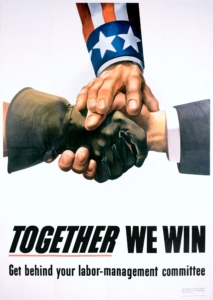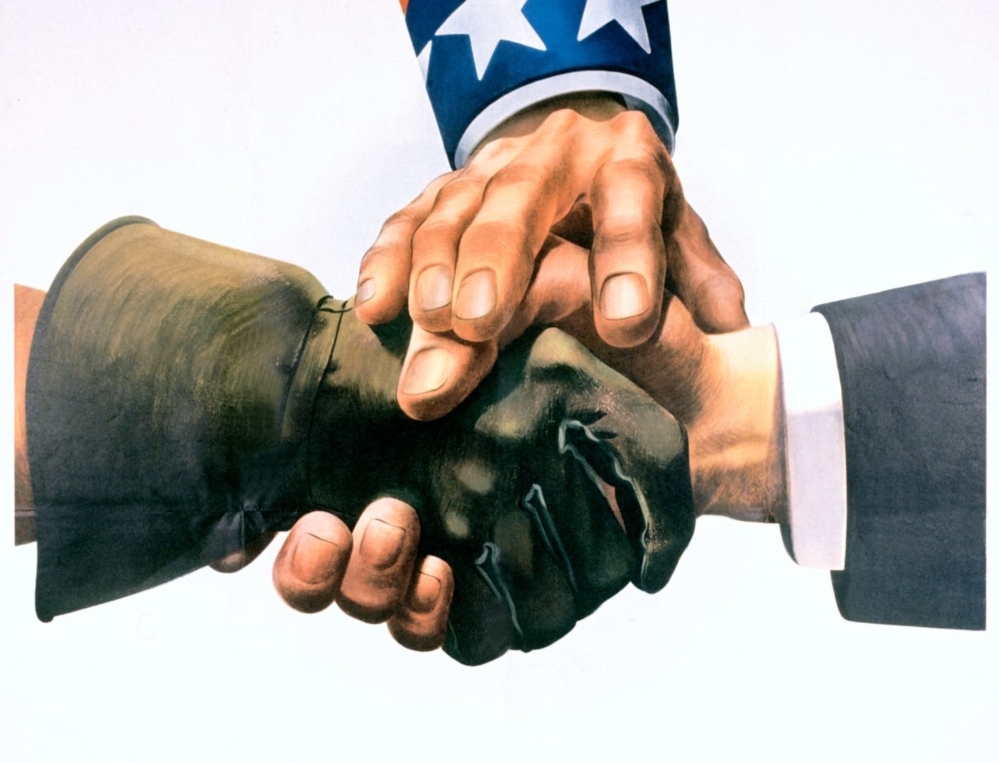The Story of Labor Day
Source: History.com, Wikipedia
 Why Do We Celebrate Labor Day?
Why Do We Celebrate Labor Day?
Labor Day, an annual celebration of workers and their achievements, originated during one of American labor history’s most dismal chapters.
In the late 1800s, at the height of the Industrial Revolution in the United States, the average American worked 12-hour days and seven-day weeks in order to eke out a basic living. Despite restrictions in some states, children as young as 5 or 6 toiled in mills, factories and mines across the country, earning a fraction of their adult counterparts’ wages.
People of all ages, particularly the very poor and recent immigrants, often faced extremely unsafe working conditions, with insufficient access to fresh air, sanitary facilities and breaks.
As manufacturing increasingly supplanted agriculture as the wellspring of American employment, labor unions, which had first appeared in the late 18th century, grew more prominent and vocal. They began organizing strikes and rallies to protest poor conditions and compel employers to renegotiate hours and pay.
The labor movement in the United States grew out of the need to protect the common interest of workers. For those in the industrial sector, organized labor unions fought for better wages, reasonable hours and safer working conditions. The labor movement led efforts to stop child labor, give health benefits and provide aid to workers who were injured or retired.
The idea of a “workingmen’s holiday,” celebrated on the first Monday in September, caught on in other industrial centers across the country, and many states passed legislation recognizing it. Congress would not legalize the holiday until 12 years later, when a watershed moment in American labor history brought workers’ rights squarely into the public’s view. On May 11, 1894, employees of the Pullman Palace Car Company in Chicago went on strike to protest wage cuts and the firing of union representatives.
Origins of The Labor Movement: Artisan Trades
The origins of the labor movement lay in the formative years of the American nation, when a free wage-labor market emerged in the artisan trades late in the colonial period. The earliest recorded strike occurred in 1768 when New York journeymen tailors protested a wage reduction. The formation of the Federal Society of Journeymen Cordwainers (shoemakers) in Philadelphia in 1794 marks the beginning of sustained trade union organization among American workers.
From that time on, local craft unions proliferated in the cities, publishing lists of “prices” for their work, defending their trades against diluted and cheap labor and, increasingly, demanding a shorter workday in the face of the Industrial Revolution. Thus a job-conscious orientation was quick to emerge, and in its wake there followed the key structural elements characterizing American trade unionism.
With the formation in 1827 of the Mechanics’ Union of Trade Associations in Philadelphia, central labor bodies began uniting craft unions within a single city, and then, with the creation of the International Typographical Union in 1852, national unions began bringing together local unions of the same trade from across the United States and Canada (hence the frequent union designation “international”).
Although the factory system was springing up during these years, industrial workers played little part in the early trade union development. In the 19th century, trade unionism was mainly a movement of skilled workers.
Early Labor Unions
The early labor movement was inspired by more than the immediate job interest of its craft members. It harbored a conception of the just society, deriving from the Ricardian labor theory of value and from the republican ideals of the American Revolution, which fostered social equality, celebrated honest labor, and relied on an independent, virtuous citizenship.
Note: Ricardian is considered to be a form of socialism based on the arguments made by Ricardo that the equilibrium value of commodities approximated producer prices when those commodities were in elastic supply, that these producer prices corresponded to the embodied labor and that profit, interest and rent were deductions from this exchange-value. This is deduced from the axiom of Ricardo and Adam Smith that labor is the source of all value.
The transforming economic changes of industrial capitalism ran counter to labor’s vision, to raise up “two distinct classes, the rich and the poor.” Beginning with the workingmen’s parties of the 1830s, the advocates of equal rights mounted a series of reform efforts that spanned the nineteenth century. Most notable were the National Labor Union, launched in 1866, and the Knights of Labor, which reached its zenith in the mid-1880s.
On their face, these reform movements might have seemed at odds with trade unionism, aiming at the cooperative commonwealth rather than a higher wage, appealing broadly to all “producers” rather than strictly to wageworkers, and eschewing the trade union reliance on the strike and boycott. But contemporaries saw no contradiction: trade unionism tended to the workers’ immediate needs, labor reform to their higher hopes. The two were held to be strands of a single movement, rooted in a common working-class constituency and to some degree sharing a common leadership. But equally important, they were strands that had to be kept operationally separate and functionally distinct.
American Federation of Labor
During the 1880s, that division fatally eroded. Despite its labor reform rhetoric, the Knights of Labor attracted large numbers of workers hoping to improve their immediate conditions. As the Knights carried on strikes and organized along industrial lines, the threatened national trade unions demanded that the group confine itself to its professed labor reform purposes. When it refused, they joined in December 1886 to form the American Federation of Labor (AFL).
The AFL marked a break with the past, for it denied to labor reform any further role in the struggles of American workers. In part, the assertion of trade union supremacy stemmed from an undeniable reality. As industrialism matured, labor reform lost its meaning–hence the confusion and ultimate failure of the Knights of Labor.
The AFL asserted as a formal policy that it represented all workers, irrespective of skill, race, religion, nationality or gender. But the national unions that had created the AFL in fact comprised only the skilled trades. Almost at once, therefore, the trade union movement encountered a dilemma: How to square ideological aspirations against contrary institutional realities?
Discrimination in The Labor Movement
As sweeping technological change began to undermine the craft system of production, some national unions did move toward an industrial structure, most notably in coal mining and the garment trades.
But most craft unions either refused or, as in iron and steel and in meat-packing, failed to organize the less skilled. Skill lines tended to conform to racial, ethnic and gender divisions, the trade union movement took on a racist and sexist coloration as well.
For a short period, the AFL resisted that tendency. But in 1895, unable to launch an interracial machinists’ union of its own, the Federation reversed an earlier principled decision and chartered the whites-only International Association of Machinists.
The color bar thereafter spread throughout the trade union movement. In 1902, blacks made up scarcely 3 percent of total membership, most of them segregated in Jim Crow locals. In the case of women and eastern European immigrants, a similar devolution occurred–welcomed as equals in theory, excluded or segregated in practice. (Only the fate of Asian workers was unproblematic; their rights had never been asserted by the AFL in the first place.)
Politics Enter
The founding doctrine of pure-and-simple unionism meant an arm’s-length relationship to the state and the least possible entanglement in partisan politics. A total separation had, of course, never been seriously contemplated; some objectives, such as immigration restriction, could be achieved only through state action, and the predecessor to the AFL, the Federation of Organized Trades and Labor Unions (1881), had in fact been created to serve as labor’s lobbying arm in Washington.
Partly because of the lure of progressive labor legislation, even more in response to increasingly damaging court attacks on the trade unions, political activity quickened after 1900. With the enunciation of Labor’s Bill of Grievances (1906), the AFL laid down a challenge to the major parties. Henceforth it would campaign for its friends and seek the defeat of its enemies.
This nonpartisan entry into electoral politics undercut the left-wing advocates of an independent working-class politics. That question had been repeatedly debated within the AFL, first in 1890 over Socialist Labor party representation, then in 1893-1894 over an alliance with the Populist Party and after 1901 over affiliation with the Socialist party of America.
As labor’s leverage with the major parties began to pay off, critics on the left acknowledged the labor movement could not afford to waste its political capital on socialist parties or independent politics. When that nonpartisan strategy failed, as it did in the reaction following World War I, an independent political strategy took hold, first through the robust campaigning of the Conference for Progressive Political Action in 1922, and in 1924 through labor’s endorsement of Robert La Follette on the Progressive ticket.
By then, however, the Republican administration was moderating its hard line, evident especially in Herbert Hoover’s efforts to resolve the simmering crises in mining and on the railroads. In response, the trade unions abandoned the Progressive party, retreated to nonpartisanship, and, as their power waned, lapsed into inactivity.
The Labor Movement and The Great Depression
It took the Great Depression to knock the labor movement off dead center. The discontent of industrial workers, combined with New Deal collective bargaining legislation, at last brought the great mass production industries within striking distance.
When the craft unions stymied the ALF’s organizing efforts, John L. Lewis of the United Mine Workers and his followers broke away in 1935 and formed the Committee for Industrial Organization (CIO), which crucially aided the emerging unions in auto, rubber, steel and other basic industries. In 1938 the CIO was formally established as the Congress of Industrial Organizations. By the end of World War II, more than 12 million workers belonged to unions and collective bargaining had taken hold throughout the industrial economy.
In politics, its enhanced power led the union movement not to a new departure but to a variant on the policy of nonpartisanship. As far back as the Progressive Era, organized labor had been drifting toward the Democratic party, partly because of the latter’s greater programmatic appeal, perhaps even more because of its ethno-cultural basis of support within an increasingly “new” immigrant working class. With the coming of Roosevelt’s New Deal, this incipient alliance solidified, and from 1936 onward the Democratic Party could count on–and came to rely on–the campaigning resources of the labor movement.
Collective Bargaining
The formation of the AFL-CIO in 1955 visibly testified to the powerful continuities persisting through the age of industrial unionism. Above all, the central purpose remained what it had always been–to advance the economic and job interests of the union membership. Collective bargaining performed impressively after World War II, more than tripling weekly earnings in manufacturing between 1945 and 1970, gaining for union workers an unprecedented measure of security against old age, illness and unemployment, and, through contractual protections, greatly strengthening their right to fair treatment at the workplace.
But if the benefits were greater and if they went to more people, the basic job-conscious thrust remained intact. Organized labor was still a sectional movement, covering at most only a third of America’s wage earners and inaccessible to those cut off in the low-wage secondary labor market.
Women and Minorities in the Labor Movement
Nothing better captures the uneasy amalgam of old and new in the postwar labor movement than the treatment of minorities and women who flocked in, initially from the mass production industries, but after 1960 from the public and service sectors as well.
Labor’s historic commitment to racial and gender equality was strengthened, but not to the point of challenging the status quo within the labor movement itself. The leadership structure remained largely closed to minorities–as did the skilled jobs that were historically the preserve of white male workers–notoriously so in the construction trades but in the industrial unions as well.
Yet the AFL-CIO played a crucial role in the battle for civil rights legislation in 1964-1965. That this legislation might be directed against discriminatory trade union practices was anticipated (and quietly welcomed) by the more progressive labor leaders. But more significant was the meaning they found in championing this kind of reform: the chance to act on the broad ideals of the labor movement. And, so motivated, they deployed labor’s power with great effect in the achievement of John F. Kennedy’s and Lyndon B. Johnson’s domestic programs during the 1960s.
Decline in Unions
This was ultimately economic, not political power, and as organized labor’s grip on the industrial sector began to weaken, so did its political capability.
From the early 1970s onward, new competitive forces swept through the heavily unionized industries, set off by deregulation in communications and transportation, by industrial restructuring and by an unprecedented onslaught of foreign goods.
As oligopolistic (markets dominated by a small number of suppliers) and regulated market structures broke down, nonunion competition spurted, concession bargaining became widespread and plant closings decimated union memberships.
The once-celebrated National Labor Relations Act increasingly hamstrung the labor movement; an all-out reform campaign to get the law amended failed in 1978. And with the election of Ronald Reagan in 1980, there came to power an anti-union administration the likes of which had not been seen since the Harding era.
Between 1975 and 1985, union membership fell by 5 million. In manufacturing, the unionized portion of the labor force dropped below 25 percent, while mining and construction, once labor’s flagship industries, were decimated. Only in the public sector did the unions hold their own. By the end of the 1980s, less than 17 percent of American workers were organized, half the proportion of the early 1950s.

